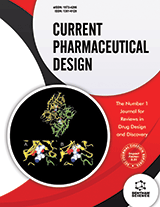Abstract
Vasospastic angina is an important cause of chest pain due to coronary artery vasospasm that is related to poor quality of life and can lead to myocardial infarction, arrhythmias and death. Since its first description as “Prinzmetal or variant angina” which was believed to be a focal spam that occurred in non-obstructed epicardial coronary arteries, physician and researchers were gradually confronted with the clinical reality and came to the conclusion that the coronary artery vasospasm was considerably more polymorphic than initially described. Although mechanism leading to vasospastic angina is not completely understood, nowadays the medical community acknowledges that it exhibits a large variability in clinical practice ranging from focal to diffuse epicardial vasospasm. Main proposed mechanisms are impairment of parasympathetic activity, coronary vascular and microvascular dysfunction due to blunted response to nitric oxide endothelium-dependent coronary vasodilatation, increased release of vasoconstricts, and oxidative stress.
Keywords: Coronary vasospasm, angina, coronary microcirculation, endothelial dysfunction, myocardial infarction, epicardial vasospasm.
Current Pharmaceutical Design
Title:Vasospastic Angina and its Relationship with the Coronary Microcirculation
Volume: 24 Issue: 25
Author(s): Edina Cenko*, Maria Bergami, Elisa Varotti and Raffaele Bugiardini
Affiliation:
- Department of Experimental, Diagnostic and Specialty Medicine, University of Bologna, Bologna,Italy
Keywords: Coronary vasospasm, angina, coronary microcirculation, endothelial dysfunction, myocardial infarction, epicardial vasospasm.
Abstract: Vasospastic angina is an important cause of chest pain due to coronary artery vasospasm that is related to poor quality of life and can lead to myocardial infarction, arrhythmias and death. Since its first description as “Prinzmetal or variant angina” which was believed to be a focal spam that occurred in non-obstructed epicardial coronary arteries, physician and researchers were gradually confronted with the clinical reality and came to the conclusion that the coronary artery vasospasm was considerably more polymorphic than initially described. Although mechanism leading to vasospastic angina is not completely understood, nowadays the medical community acknowledges that it exhibits a large variability in clinical practice ranging from focal to diffuse epicardial vasospasm. Main proposed mechanisms are impairment of parasympathetic activity, coronary vascular and microvascular dysfunction due to blunted response to nitric oxide endothelium-dependent coronary vasodilatation, increased release of vasoconstricts, and oxidative stress.
Export Options
About this article
Cite this article as:
Cenko Edina *, Bergami Maria , Varotti Elisa and Bugiardini Raffaele , Vasospastic Angina and its Relationship with the Coronary Microcirculation, Current Pharmaceutical Design 2018; 24 (25) . https://dx.doi.org/10.2174/1381612824666180625150833
| DOI https://dx.doi.org/10.2174/1381612824666180625150833 |
Print ISSN 1381-6128 |
| Publisher Name Bentham Science Publisher |
Online ISSN 1873-4286 |
 38
38 6
6
- Author Guidelines
- Bentham Author Support Services (BASS)
- Graphical Abstracts
- Fabricating and Stating False Information
- Research Misconduct
- Post Publication Discussions and Corrections
- Publishing Ethics and Rectitude
- Increase Visibility of Your Article
- Archiving Policies
- Peer Review Workflow
- Order Your Article Before Print
- Promote Your Article
- Manuscript Transfer Facility
- Editorial Policies
- Allegations from Whistleblowers
- Announcements
Related Articles
-
Biological Responses to Hydrogen Molecule and its Preventive Effects on Inflammatory Diseases
Current Pharmaceutical Design Review of Antibiotic and Non-Antibiotic Properties of Beta-lactam Molecules
Anti-Inflammatory & Anti-Allergy Agents in Medicinal Chemistry Pharmacokinetic and Pharmacodynamic Studies of Nifedipine Loaded Microspheres for the Treatment of Hypertension
Current Drug Delivery Chromatin Structure and Epigenetics of Tumour Cells: A Review
Cardiovascular & Hematological Disorders-Drug Targets Cytomegalovirus Retinitis Diagnosis and Treatment in a Kidney Transplant Recipient
Infectious Disorders - Drug Targets Editorial (Thematic Issue: Modulations and their Biological Functions of Protein-Biomolecule Interactions)
Current Topics in Medicinal Chemistry Dietary Factors and Hyperuricaemia
Current Pharmaceutical Design Structure Activity Relationships for Nicotinamide in the Treatment of Stroke
Letters in Drug Design & Discovery Editorial (Thematic Issue: Salt Sensitive Hypertension: Mechanisms, Management, Prognosis and Treatment)
Current Hypertension Reviews Iatrogenic Right Atrial Thrombus Complicated by Pulmonary Embolism: Management and Outcomes
Current Cardiology Reviews Antibody Fragments as Potential Biopharmaceuticals for Cancer Therapy: Success and Limitations
Current Medicinal Chemistry Coronary Artery Disease in Patients with Chronic Kidney Disease: A Clinical Update
Current Cardiology Reviews From Cerebrospinal Fluid Pulsation to Noninvasive Intracranial Compliance and Pressure Measured by MRI Flow Studies
Current Medical Imaging Should Antithrombotic Treatment Strategies in East Asians Differ from Caucasians?
Current Vascular Pharmacology Hemodynamic Regulation of Metallopeptidases within the Vasculature
Protein & Peptide Letters New Approaches for the Treatment of Chagas Disease
Current Drug Targets Adoptive Regulatory T-cell Therapy Attenuates Subarachnoid Hemor-rhage-induced Cerebral Inflammation by Suppressing TLR4/NF-B Signaling Pathway
Current Neurovascular Research Coronavirus (COVID-19) and Employee Health
Coronaviruses The Impact of Opioids on Cardiac Electrophysiology
Current Cardiology Reviews Serotonergic 5-HT2C Receptors as a Potential Therapeutic Target for the Design Antiepileptic Drugs
Current Topics in Medicinal Chemistry


























